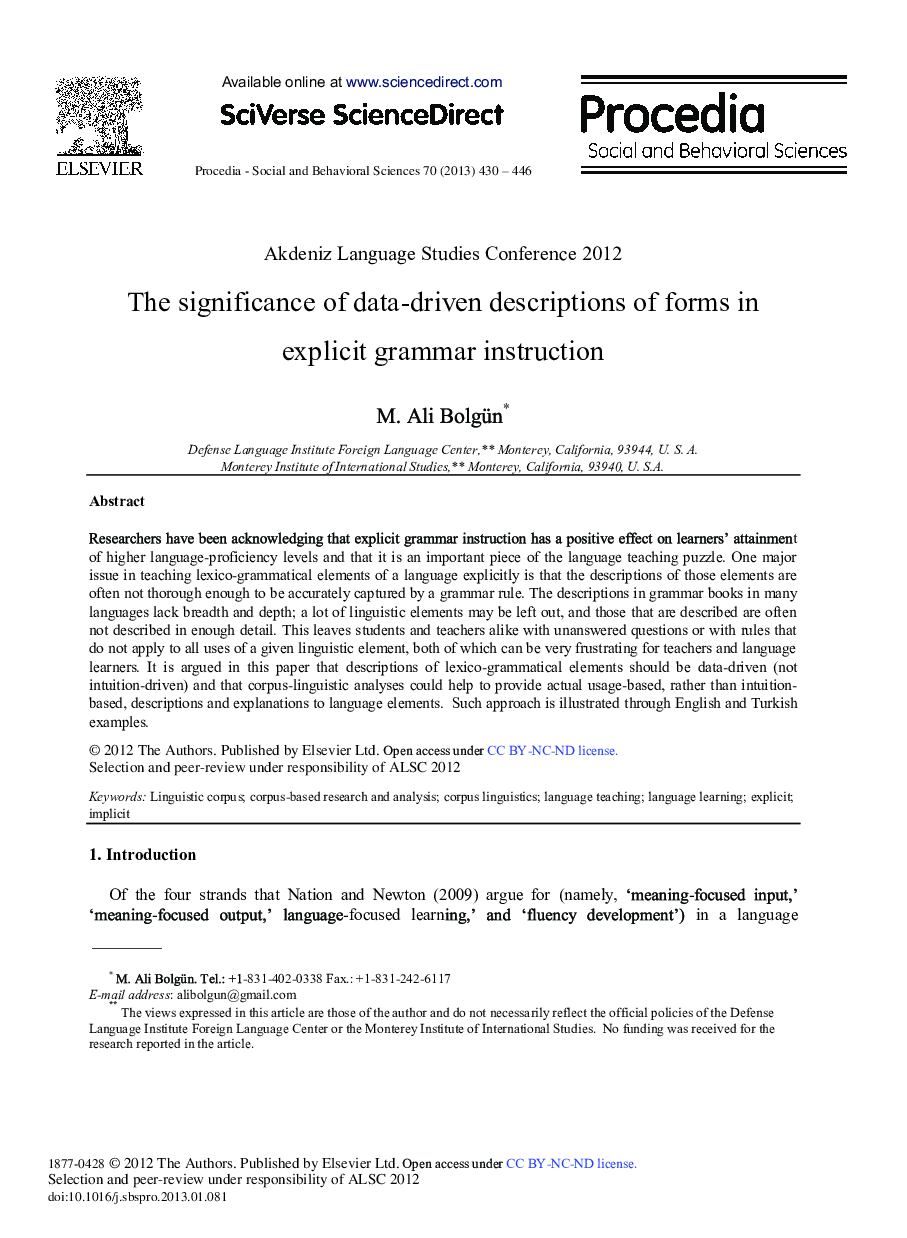| Article ID | Journal | Published Year | Pages | File Type |
|---|---|---|---|---|
| 1118244 | Procedia - Social and Behavioral Sciences | 2013 | 17 Pages |
Abstract
Researchers have been acknowledging that explicit grammar instruction has a positive effect on learners' attainment of higher language-proficiency levels and that it is an important piece of the language teaching puzzle. One major issue in teaching lexico-grammatical elements of a language explicitly is that the descriptions of those elements are often not thorough enough to be accurately captured by a grammar rule. The descriptions in grammar books in many languages lack breadth and depth; a lot of linguistic elements may be left out, and those that are described are often not described in enough detail. This leaves students and teachers alike with unanswered questions or with rules that do not apply to all uses of a given linguistic element, both of which can be very frustrating for teachers and language learners. It is argued in this paper that descriptions of lexico-grammatical elements should be data-driven (not intuition-driven) and that corpus-linguistic analyses could help to provide actual usage-based, rather than intuition- based, descriptions and explanations to language elements. Such approach is illustrated through English and Turkish examples.
Related Topics
Social Sciences and Humanities
Arts and Humanities
Arts and Humanities (General)
Authors
M. Ali Bolgün,
